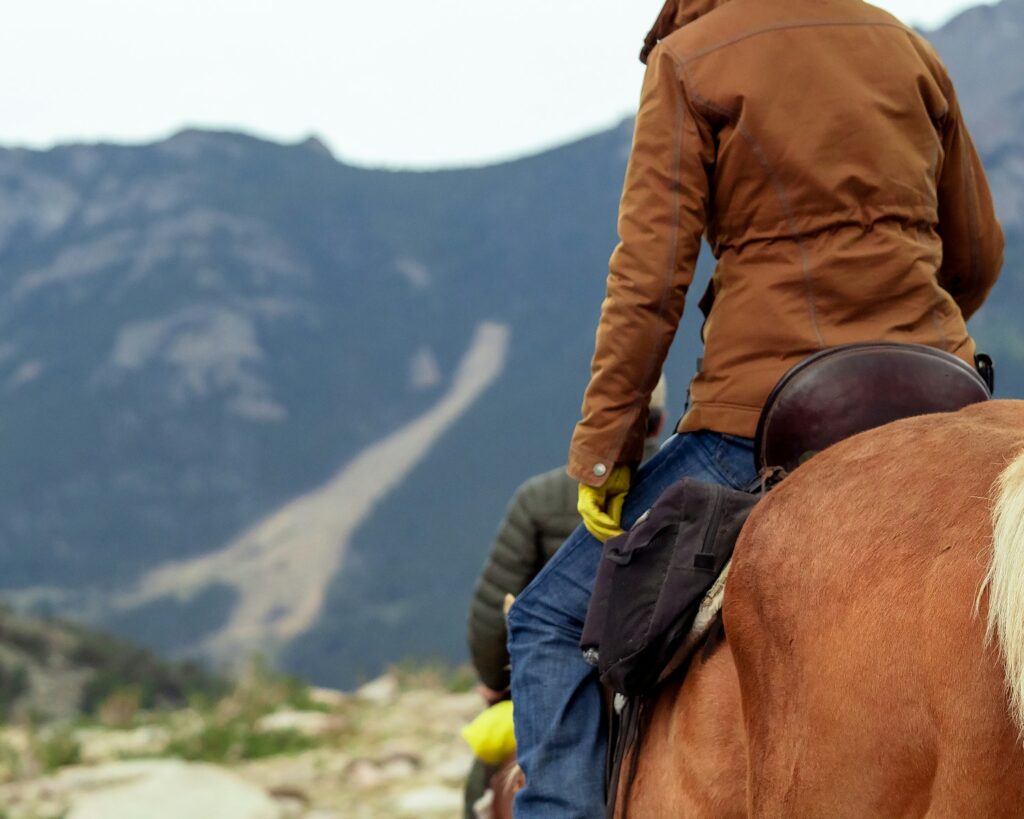Embarking on a trail ride with your horse for the first time is an exciting milestone that opens up a world of new experiences for both of you. Unlike the controlled environment of an arena, trails present varied terrain, unexpected sights, sounds, and potential challenges that require proper preparation. A well-prepared horse will be more confident, responsive, and safe on the trail, making the experience enjoyable rather than stressful. This comprehensive guide will walk you through essential steps to ensure your horse is physically and mentally ready for their first adventure beyond the arena gates, helping you build a foundation for many happy trail rides to come.
Assess Your Horse’s Training Readiness
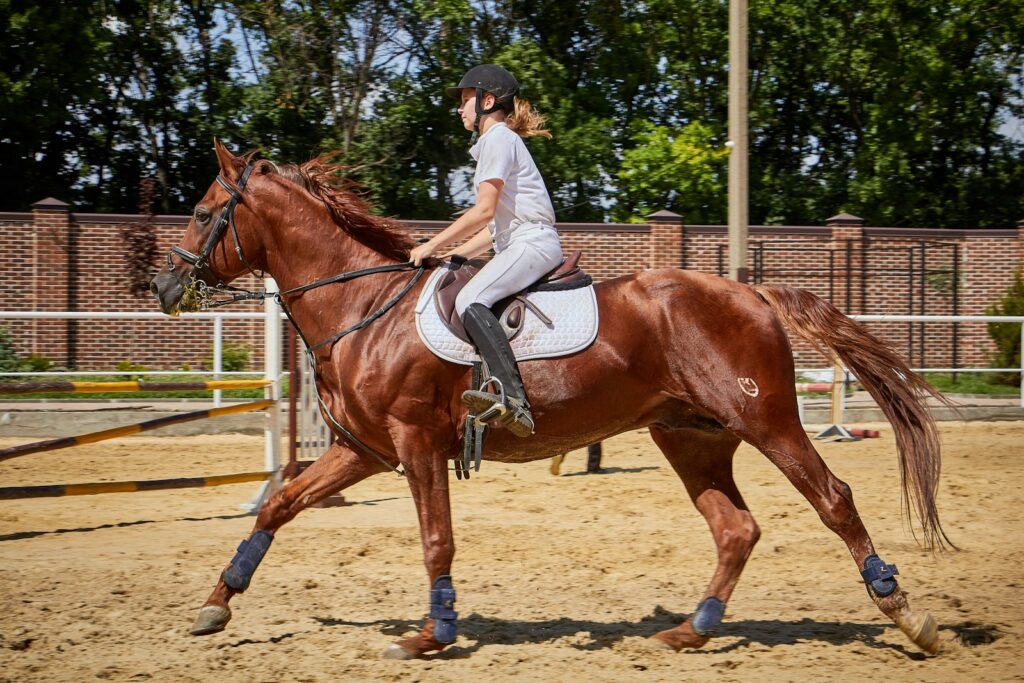
Before considering taking your horse on a trail, evaluate whether they have mastered basic training fundamentals that will be essential outside the arena. Your horse should respond reliably to basic cues including walk, trot, canter, halt, and backing up, even when distracted. They should stand quietly for mounting and dismounting, as you may need to get on and off during a trail ride for various reasons. Additionally, your horse should be comfortable with leg yielding and turning on the forehand or haunches, skills that might be needed to navigate tight spots on narrow trails. If these fundamentals aren’t solid, postpone trail riding and focus on strengthening these skills in a controlled environment first.
Build Physical Conditioning
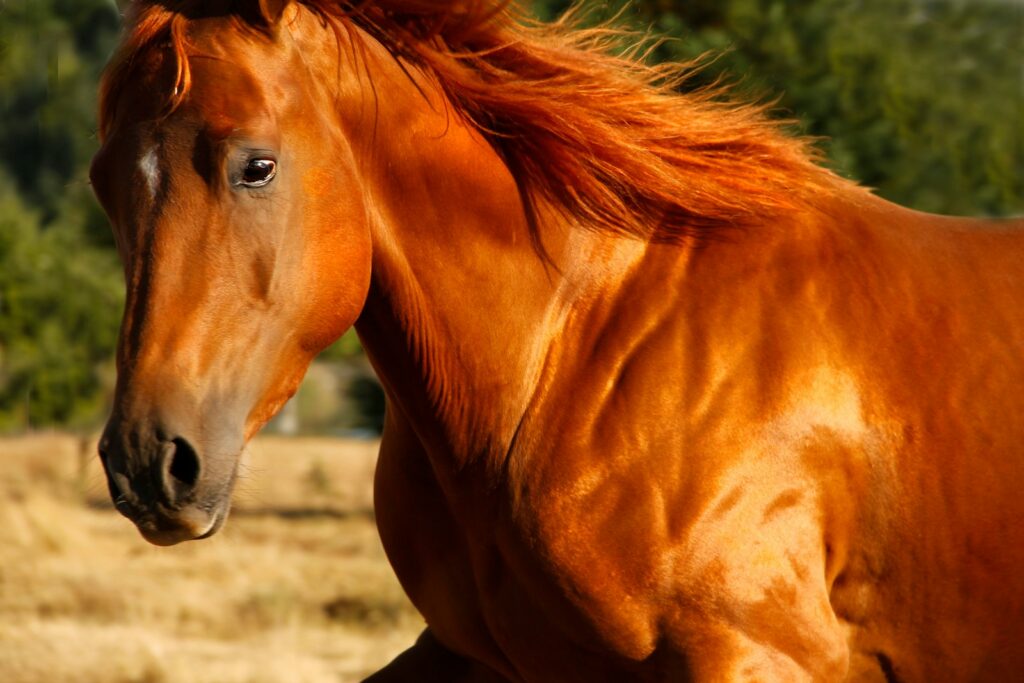
Trail riding often demands more sustained exertion than arena work, so physical conditioning is crucial before venturing out. Start by gradually increasing the duration and intensity of your riding sessions in the arena, working up to at least the length of time you plan to spend on your first trail ride. Incorporate terrain variations when possible, such as small hills or different footing, to prepare your horse for what they might encounter on trails. Cross-training exercises like cavalletti work, trotting over poles, and controlled cantering can help develop the muscle groups needed for navigating uneven terrain. Remember that a tired horse is more likely to stumble or make poor decisions, so ensuring adequate fitness is a safety measure as much as a performance consideration.
Expose Your Horse to Novel Objects
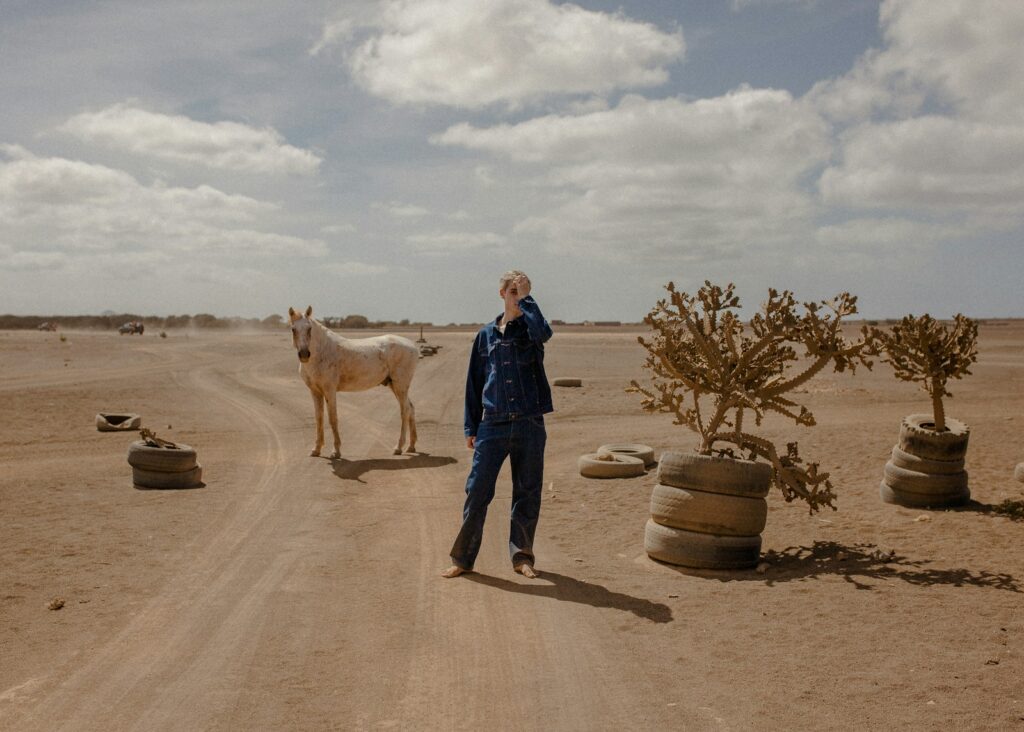
Trails contain many potential “spook factors” that horses rarely encounter in arena settings, so desensitization training is essential preparation. Set up an obstacle course in your arena or training area with items like tarps, flags, balloons, umbrellas, and plastic bags to help your horse become comfortable with unusual sights. Work with your horse first from the ground and then under saddle, rewarding calm responses and patience when facing new objects. Gradually increase the challenge by asking your horse to move closer to or over these items as their confidence grows. This systematic desensitization builds your horse’s trust in you as their leader and teaches them to approach new situations with curiosity rather than fear.
Practice Water Crossings
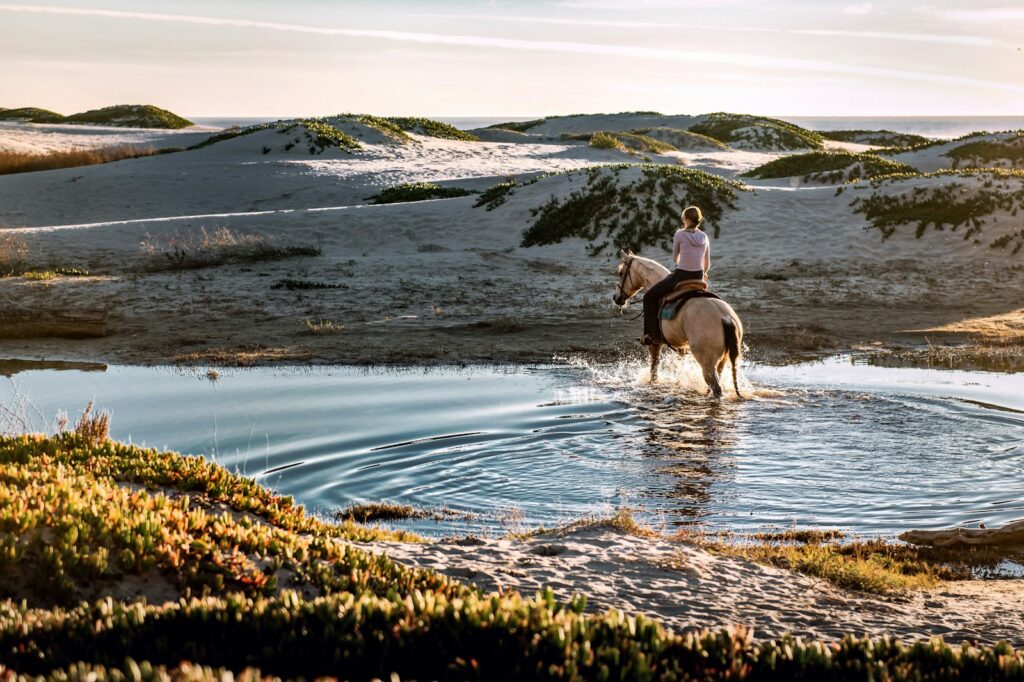
Water crossings can be particularly challenging for inexperienced trail horses, so specific preparation for this obstacle is important. Begin with very shallow water like puddles or a hose-created wet spot if your horse is particularly hesitant. Never force a frightened horse into water; instead, use patience and positive reinforcement to build their confidence gradually. If possible, have an experienced horse demonstrate crossing water first, as horses learn well through observation. For deeper crossings, ensure your horse is comfortable getting their fetlocks, then cannon bones, and eventually their belly wet before attempting an actual stream or river crossing on the trail. This progressive approach builds confidence while keeping both of you safe.
Introduce Trail-Specific Tack
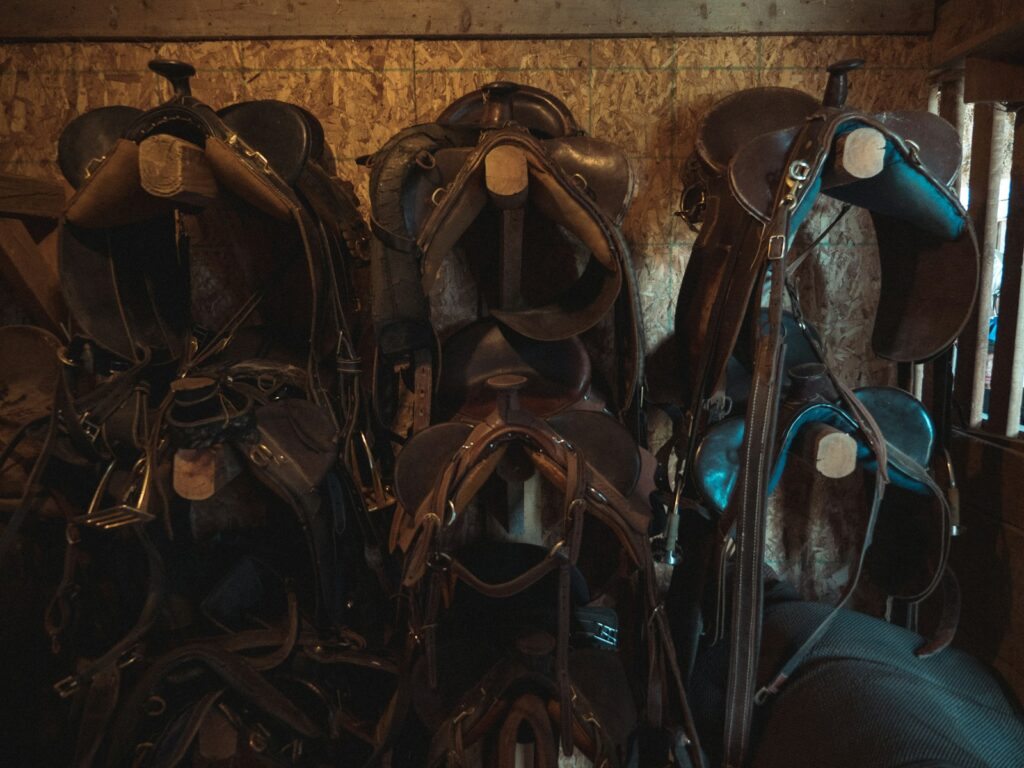
The tack requirements for trail riding often differ from arena riding, and your horse needs time to adjust to any new equipment before hitting the trails. If you’ll be using items like a breast collar, crupper, or saddlebags, introduce them individually in familiar settings before combining them or using them on the trail. Check that all tack fits properly, as ill-fitting equipment can cause discomfort that may manifest as behavioral issues during your ride. Consider whether a different bit or bridle might be appropriate for trail riding, particularly if your horse tends to get excited or nervous in new environments. Whatever changes you make, ensure your horse has several comfortable rides with the new setup before your trail debut.
Practice Riding in Groups
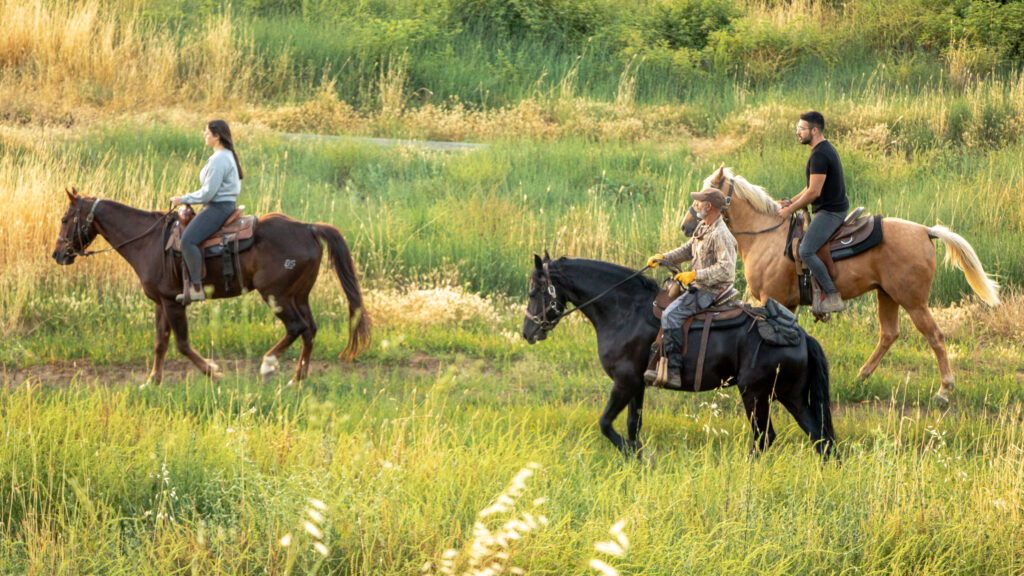
Most trail rides involve multiple horses, which presents unique challenges for horses accustomed to working individually in an arena. Arrange practice sessions where your horse can ride with others in various formations – leading, following, and riding side-by-side. Work on maintaining a consistent distance between horses, as some horses become anxious when others get too close or too far away. Teach your horse to remain calm when other horses in the group trot or canter away, as separation anxiety can trigger dangerous behaviors like bolting. Additionally, practice having other horses approach from the front and behind, simulating passing scenarios that might occur on multi-use trails.
Simulate Trail Conditions
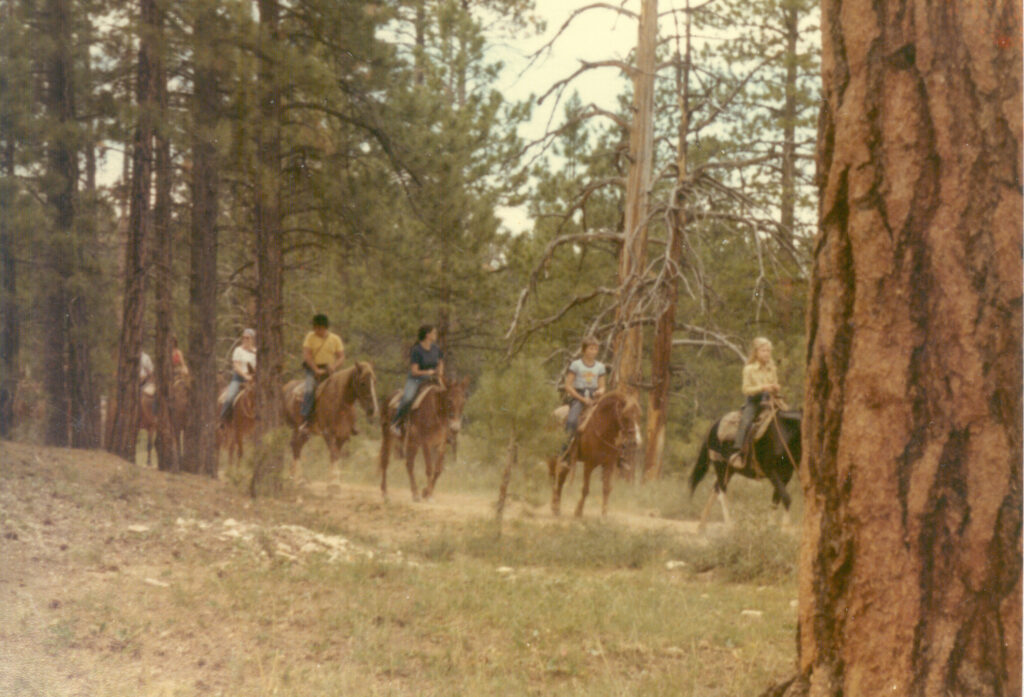
Creating mock trail scenarios in familiar surroundings helps prepare your horse for actual trail conditions while maintaining a controlled environment. Set up scenarios that mimic narrow passages, small hills, and uneven footing in your arena or property. Practice riding on the perimeter of your property rather than always in the center of the arena to get your horse used to “edge” situations similar to trail riding along drop-offs or boundaries. If possible, arrange supervised walks outside your normal riding area, gradually expanding the territory your horse is familiar with before attempting a full trail ride. These simulated experiences build confidence without the added pressure of being far from home.
Teach Trail-Specific Commands
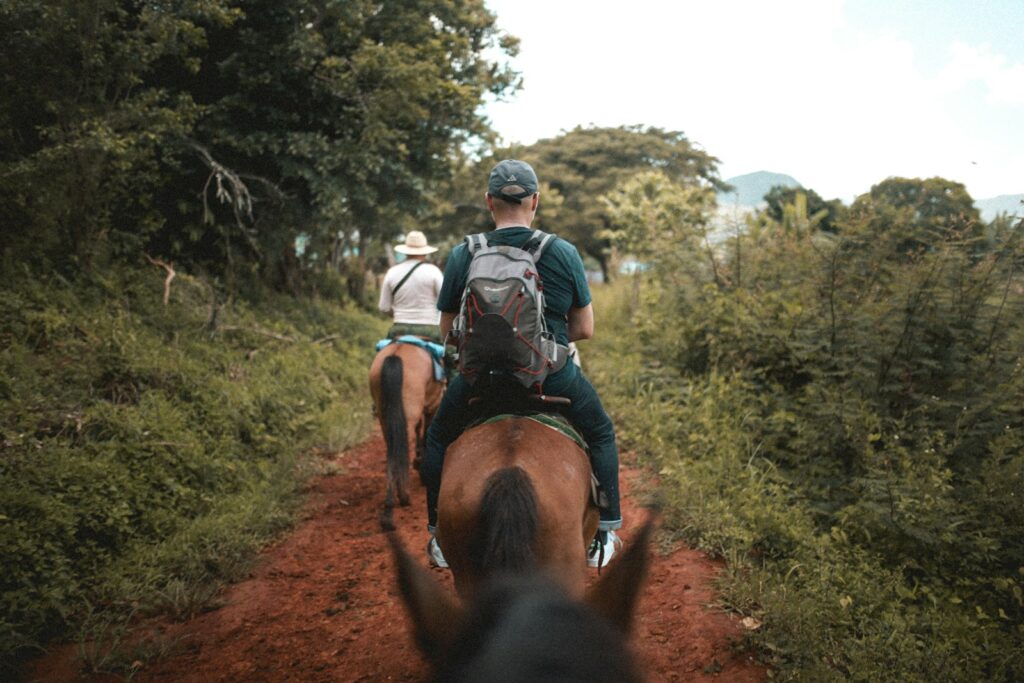
Develop clear communication signals for situations unique to trail riding that may not come up in arena work. Train your horse to respond to verbal or physical cues indicating they should move sideways away from hazards or other trail users without turning around. Establish a reliable “whoa” command that works even when your horse is excited or uncomfortable, as this can be crucial for safety in unexpected situations. Practice transitioning quickly between gaits and maintaining control at each gait regardless of what terrain you’re covering. These specialized commands become your safety toolkit when navigating the unpredictable elements of trail riding.
Trailer Training
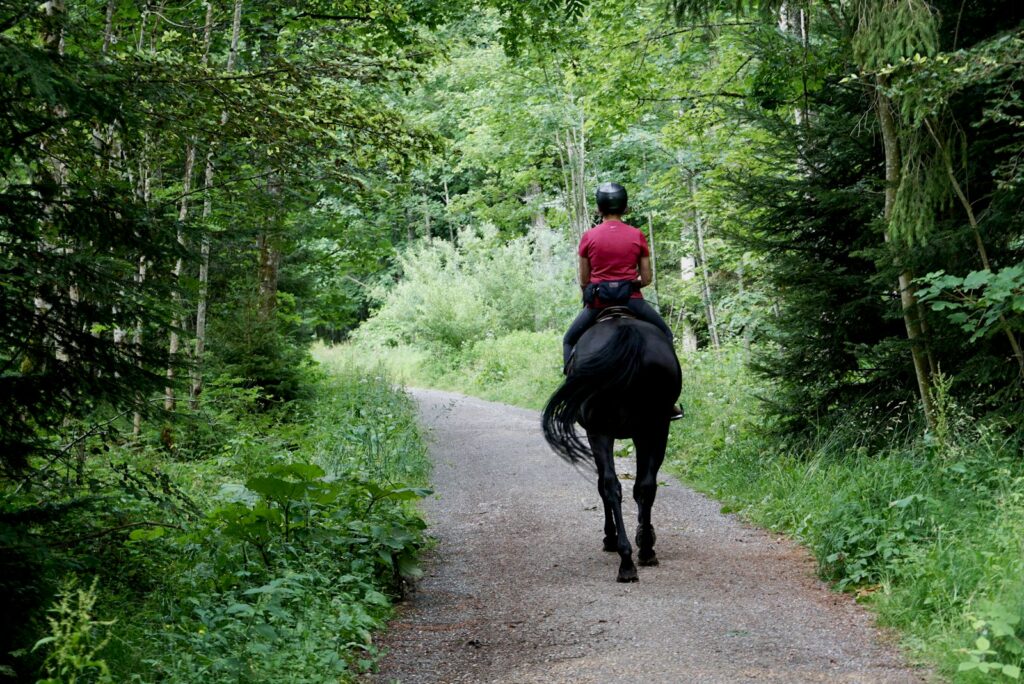
Many trail rides begin with a trailer journey to the trailhead, so ensuring your horse loads, travels, and unloads calmly is an essential preparation step. If your horse is inexperienced with trailering, begin with short, positive loading sessions without actually traveling anywhere, rewarding calm behavior. Gradually progress to short trips around your neighborhood before attempting longer journeys. Practice unloading in different locations, as the excitement of a new environment can make normally well-behaved horses difficult to handle. Consider how your horse will be secured during the journey and practice whatever method you’ll use, whether cross-ties, straight ties, or loose in a box stall configuration.
Select the Right First Trail
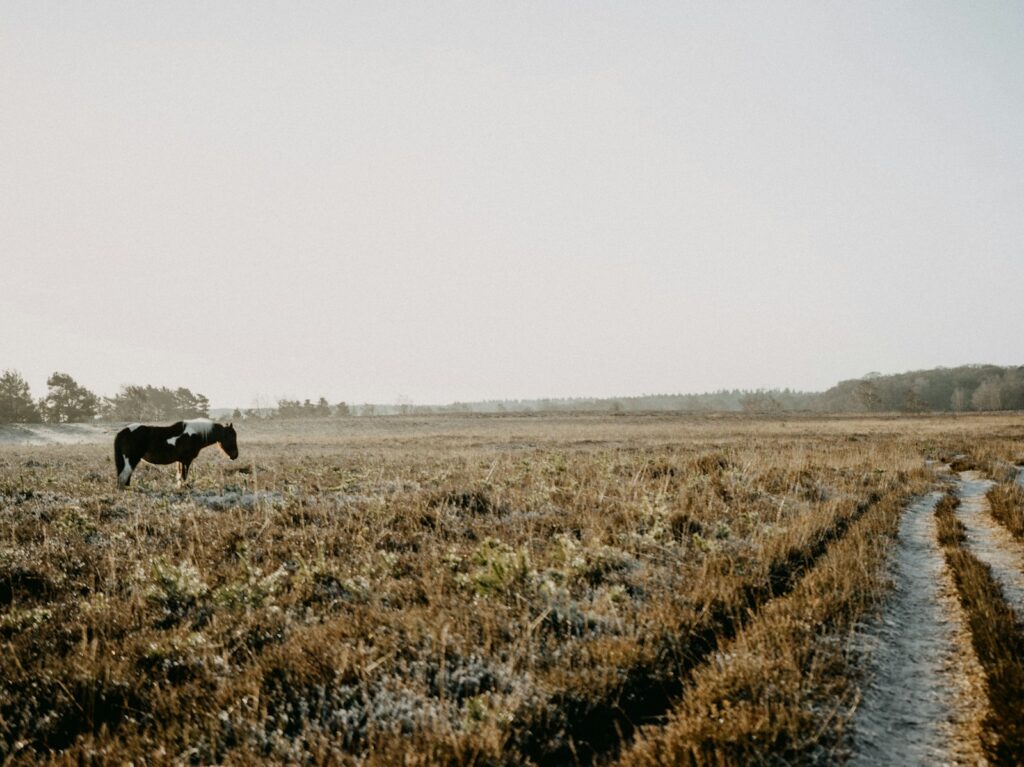
The choice of trail for your horse’s first experience can significantly impact their long-term comfort with trail riding. Research local trails and select one that is relatively short (1-2 hours maximum), well-maintained, and primarily flat with good footing. Avoid trails with significant hazards like deep water crossings, steep drop-offs, or areas frequently used by mountain bikers or motorized vehicles for this initial outing. Consider the time of day and week, choosing a time when the trail is likely to be less crowded to minimize unexpected encounters. If possible, ride with someone familiar with the trail who can alert you to any particularly challenging sections ahead.
Prepare for the Unexpected
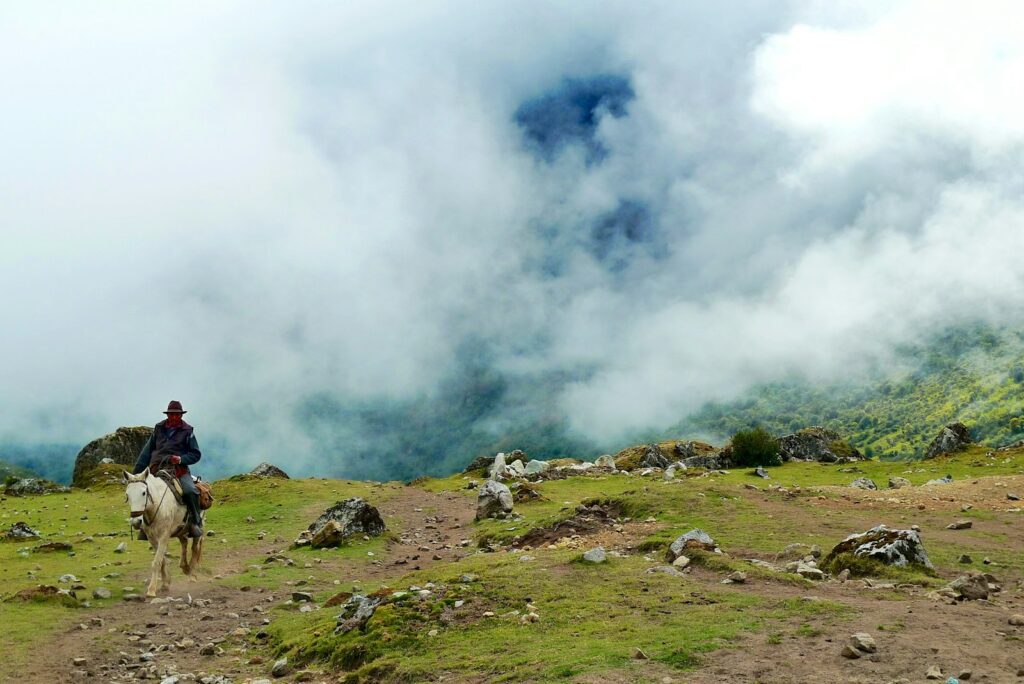
Trail riding inherently involves a degree of unpredictability, so mental preparation for handling unexpected situations is vital. Practice emergency dismounts from both sides of your horse so you can quickly get off if necessary, regardless of what’s on either side of the trail. Learn basic first aid for both yourself and your horse in case of injury in a remote location. Carry essential items like a hoof pick (for removing stones), a small first aid kit, a cell phone in a protective case, and water for both you and your horse. Having these preparations in place gives you confidence that you can handle challenges, which your horse will sense and respond to positively.
Choose the Right Companions
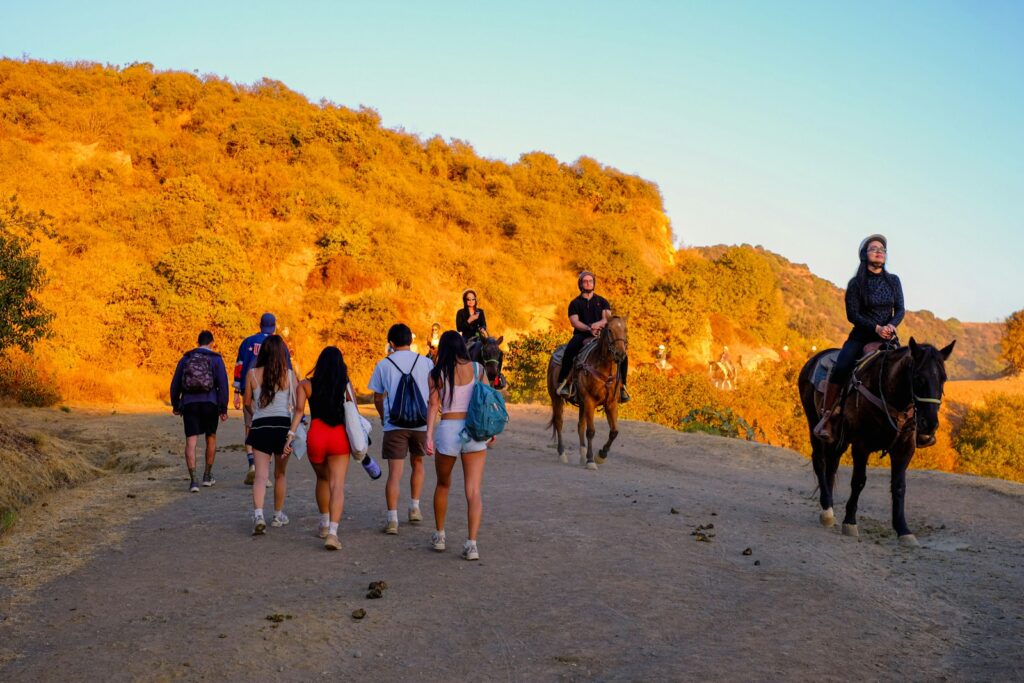
The horses and humans that accompany you on your horse’s first trail ride can significantly influence the experience. Select riding companions with calm, experienced trail horses that can provide a steady example for your novice horse to follow. Avoid riding with people who enjoy galloping on trails or taking unnecessary risks, as the excitement can be contagious and overwhelming for a first-timer. Communicate clearly with your companions about your horse’s experience level and establish signals or vocabulary for alerting each other to potential challenges on the trail. The right companions will be patient, understanding, and supportive, creating a positive social environment for your horse’s first adventure.
Final Pre-Trail Checklist

In the days leading up to your planned first trail ride, run through a final preparation checklist to ensure both you and your horse are fully ready. Verify that all tack is in good repair, properly fitted, and cleaned to prevent unexpected equipment issues. Check your horse’s hooves and consider whether shoes or boots might be beneficial depending on the terrain you’ll encounter. Plan your route, including potential exit points if the ride needs to be cut short for any reason. Pack any necessary items the night before so nothing is forgotten in pre-ride excitement. Finally, assess your own mental state – if you’re feeling anxious, your horse will likely pick up on that energy, so use relaxation techniques or consider postponing if you don’t feel confident.
The journey to prepare a horse for their first trail ride requires patience, consistency, and thoughtful planning, but the rewards are well worth the effort. A properly prepared horse will approach the trail with curiosity and confidence rather than fear, setting the stage for countless enjoyable adventures together. Remember that each horse is an individual with unique personality traits and learning patterns, so adapt these guidelines to suit your horse’s specific needs and progress at a pace that builds their confidence. By investing time in proper preparation, you’re not just preparing for a single ride – you’re building a foundation of trust, communication, and partnership that will enhance all aspects of your relationship with your horse both on and off the trail.

